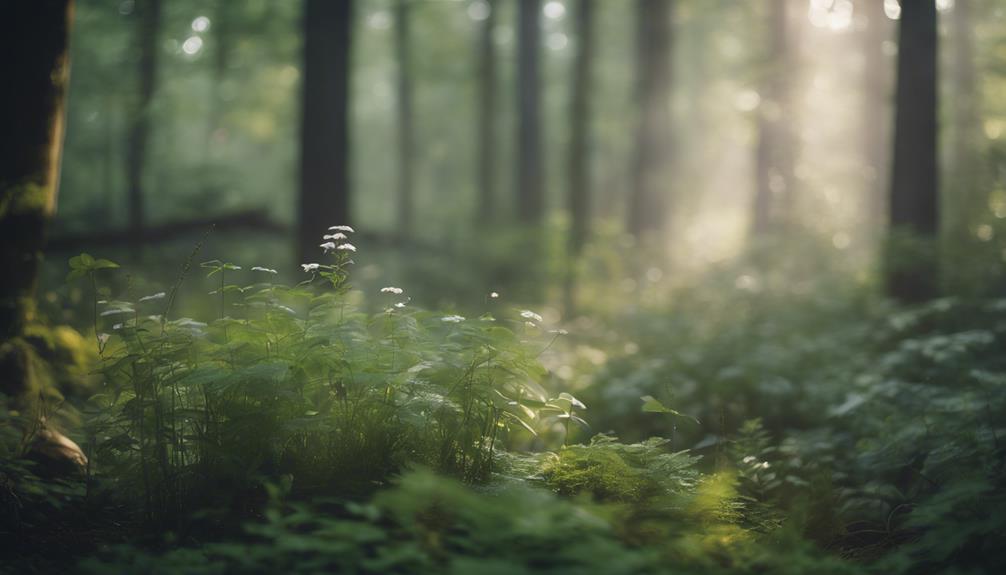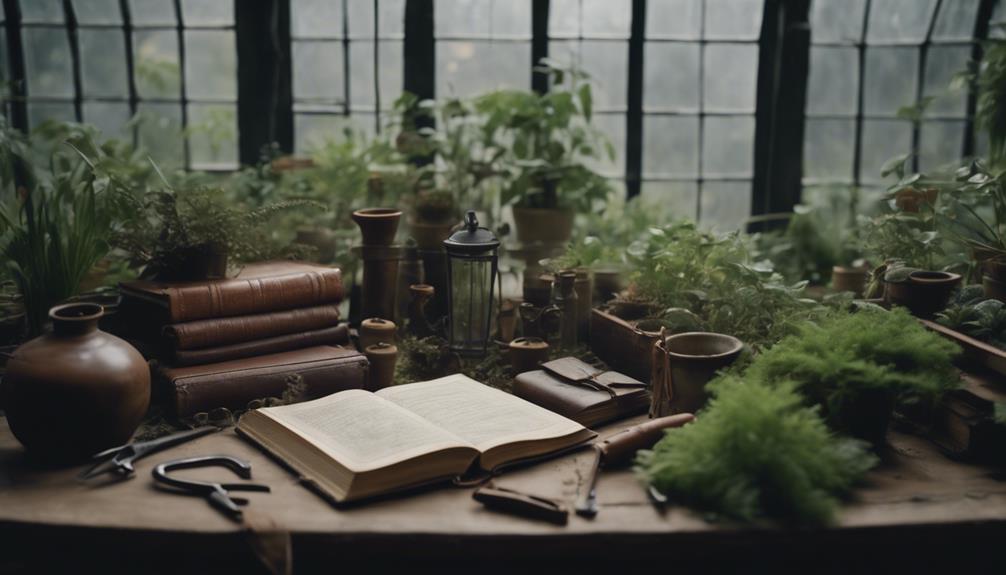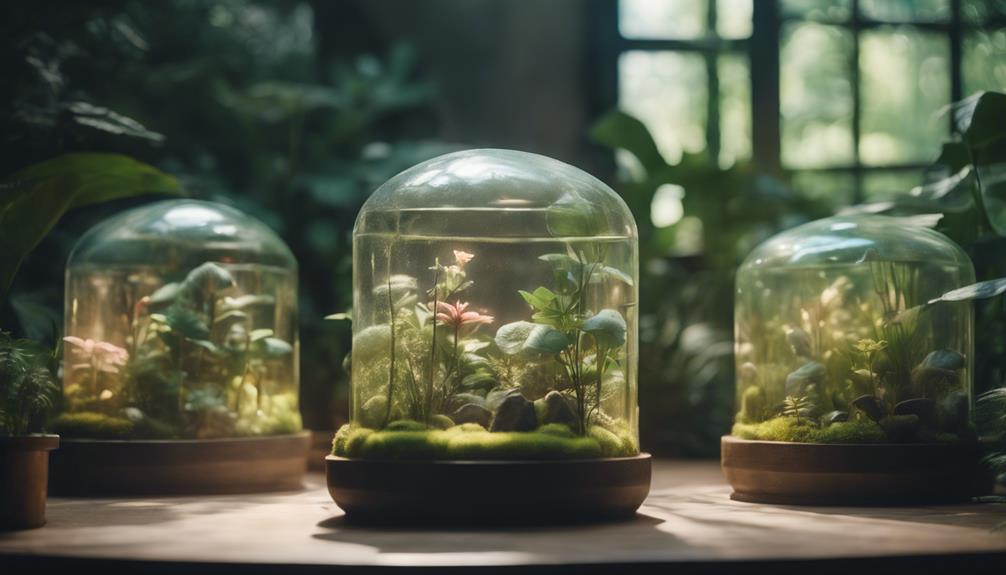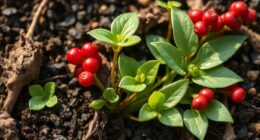We've got a wealth of herbology courses in Michigan, offering a diverse range of programs that cater to different interests and expertise levels, from introductory classes to advanced training in herbal medicine and plant energetics. From Herbal Roots in Ann Arbor to Wildcrafting in the Upper Peninsula, these 10 courses provide hands-on learning experiences, practical knowledge, and opportunities to connect with nature. With experienced instructors and unique approaches, each program offers something distinct. We'll explore these courses, uncovering the specifics of each, and what makes them worth exploring further.
Key Takeaways
• Explore diverse herbology courses in Michigan, catering to different interests and expertise levels.
• Learn from experienced instructors, gaining valuable insights and practical skills in herb identification and preparations.
• Networking opportunities abound, expanding knowledge and connections in herbal medicine and plant energetics.
• Develop hands-on experience in wildcrafting, herbal medicine making, and holistic wellness through immersive courses.
• Enhance career advancement opportunities in herbal medicine, plant energetics, and related fields through Michigan's herbology courses.
Herbal Roots in Ann Arbor
In Ann Arbor, we can explore the world of herbal medicine at the Ann Arbor School Of Massage, Herbal & Natural Medicine, which offers a range of classes. These herb classes cover a variety of topics that cater to our interests and needs.
We can learn about COVID-19 prevention, create herbal medicine at home, and even explore the benefits of summer harvest. Additionally, we can discover how to create our own home herbal apothecary.
The classes are scheduled from 9:30 a.m. to 1:30 p.m., with optional homework provided for those who want to investigate further. We need to register in advance, as spots are limited. The fall series schedule is typically posted in late July, and each class costs $60 plus a $10 materials fee.
We can find the school at 3684 W. Liberty Rd., Ann Arbor, and contact them at 734-769-7794 for more information. By taking these herb classes, we can gain a deeper understanding of herbal medicine and its benefits.
Detroit Herbal Academy Programs
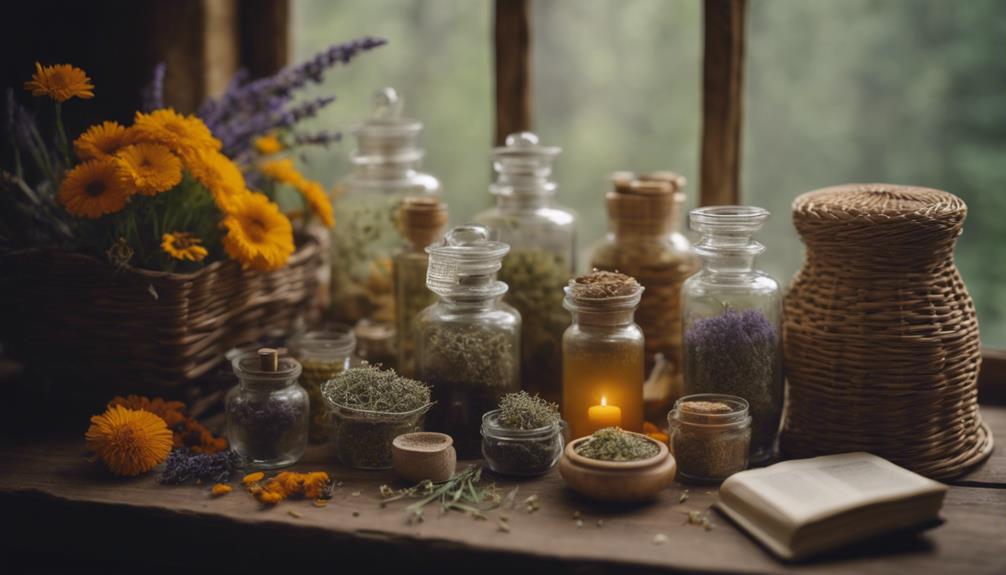
We can explore the world of herbalism with Detroit Herbal Academy, which offers a range of courses that cover various aspects of herbal medicine making, plant identification, and holistic wellness. Their programs provide an in-depth look at the world of herbalism, where we can delve deeply into the properties and uses of local plants, as well as learn about ethical wildcrafting practices.
Through their intensive courses, we can gain hands-on experience and practical knowledge in herbal studies. We'll discover the medicinal uses of herbs, learn preparation techniques, and explore the historical context of herbal remedies. With Detroit Herbal Academy, we can gain a thorough understanding of the herbal world and its applications in modern wellness.
Michigan Herbal Medicine School
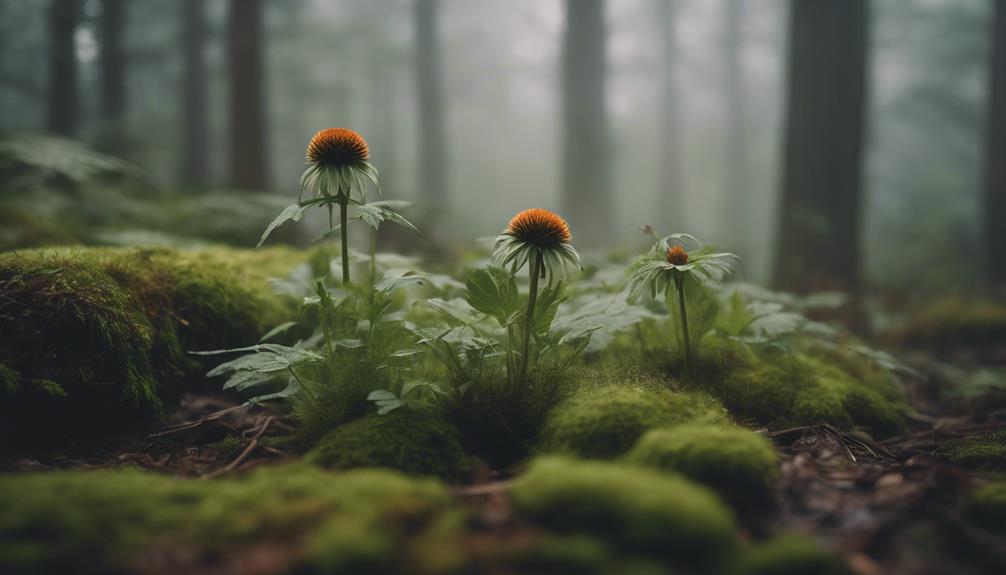
Michigan Herbal Medicine School takes an invigorating approach to herbal education, exploring an herb's strength to its gentle or forceful nature. We're drawn to their unique perspective, which challenges traditional notions of herb strength for a more accurate understanding of plant dynamics.
As we immerse ourselves in their classes, we're impressed by the breadth of topics covered, from herb identification and medicinal uses to ethics, history, and practical applications. It's clear that Michigan Herbal Medicine School is committed to making herbal education accessible and inclusive.
Whether we're seasoned herbalists or just starting out, their classes, walks, and events – offered in Michigan, across the US, and online – provide a supportive environment to learn and grow. With Jim McDonald, the herbalist behind the school, guiding us, we're inspired to become skilled medicine makers, crafting remedies that truly harness the gentle or forceful nature of herbs.
Herbalism 101 at MSU Extension
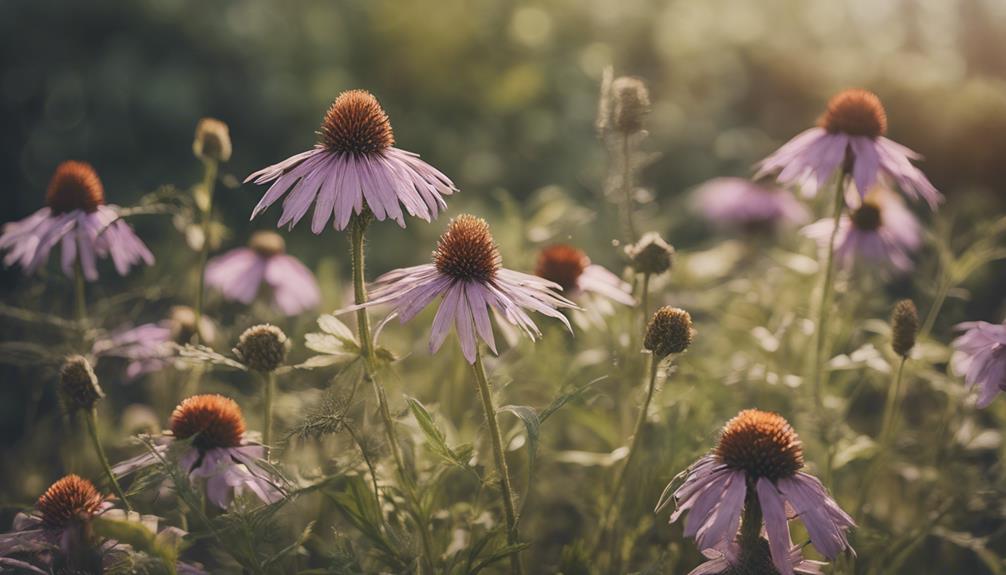
As we explore Herbalism 101 at MSU Extension, we'll learn the essential aspects of herbal medicine.
We'll develop our plant identification skills, which are vital for understanding the properties and uses of different herbs.
We'll also learn about essential safety precautions to make sure we're using herbs responsibly and effectively.
Herbal Medicine Basics
In Michigan State University Extension's Herbalism 101 course, we explore the fundamentals of herbal medicine, uncovering the world of plant-based remedies and natural health solutions. We investigate the foundational energetic principles of herbalism, understanding how plants interact with our bodies and the environment. We learn about the different ways herbs can be used to promote health and wellness, from teas and tinctures to salves and infusions.
As we investigate herbal medicine basics, we discover how plants can be used to address common health issues, such as stress, anxiety, and digestive problems. We learn about the importance of quality control, sourcing, and sustainable harvesting practices.
Through hands-on workshops and field trips, we gain practical skills in preparing herbal remedies and products, from herbal teas to skincare products. By the end of the course, we'll have a solid understanding of herbal medicine basics and be able to create our own herbal remedies and products.
With this foundation, we can continue to explore the world of herbalism, expanding our knowledge and skills in this ancient art.
Plant Identification Skills
We explore essential plant identification skills in Herbalism 101 at MSU Extension, learning to recognize the characteristics, habitats, and medicinal uses of common Michigan plants.
As beginners, we need a solid foundation in plant identification skills to make sure we're working with the right plants for our herbal remedies. That's exactly what we get in this course.
We dive into the world of medicinal plants native to Michigan, exploring their unique characteristics, habitats, and medicinal uses. The course takes us on practical field trips, allowing us to put our newfound knowledge into practice.
We get hands-on experience identifying plants in their natural habitats, which reinforces our learning and builds our confidence. By the end of the course, we're equipped with the plant identification skills necessary to start our herbalism journey.
We can identify the plants we need, harvest them sustainably, and create effective remedies. With Herbalism 101, we're well on our way to becoming skilled herbalists, and it all starts with developing solid plant identification skills.
Safety Precautions Learned
Building on our newfound plant identification skills, we now shift our focus to the critical aspect of safety precautions in herbalism. In the Herbalism 101 course at MSU Extension, we learn to navigate the complexities of safe harvesting, potential interactions, and proper handling of herbal remedies.
We explore the essential safety measures to prevent allergic reactions, toxicity, and adverse effects from herbal remedies. We learn about safe harvesting practices, proper plant identification, and potential herb-drug interactions, understanding contraindications and dosage guidelines.
Emphasis is placed on consulting healthcare professionals to guarantee responsible use of herbal remedies. We gain knowledge on handling and storing herbs, maintaining quality standards, and ensuring herbal product safety.
Throughout the course, we develop a solid understanding of safety precautions in herbalism, recognizing the importance of responsible practices in the field. By grasping these critical concepts, we're empowered to make informed decisions about our health and well-being, leveraging the benefits of herbalism while minimizing potential risks.
Nature's Wisdom in Traverse City

We're drawn to Nature's Wisdom in Traverse City, a hub for herbology enthusiasts, where a variety of courses and workshops await. As we explore the world of herbology, we realize the importance of formal training, and Nature's Wisdom provides just that. Their courses cover a range of topics, from plant identification to medicinal uses and ethical wildcrafting. We appreciate the hands-on approach, where we can learn about local plants and their therapeutic properties in an immersive environment.
The emphasis on building relationships with plants and integrating herbal knowledge into daily life resonates with us. Nature's Wisdom offers an interactive learning experience, allowing us to engage with the material and connect with like-minded individuals. We're impressed by the school's commitment to providing a thorough education in herbology, covering both theoretical and practical aspects.
Whether we're beginners or seasoned enthusiasts, Nature's Wisdom in Traverse City provides the perfect setting to deepen our understanding of herbalism. With their expert instructors and supportive community, we feel confident in our ability to explore the world of herbology.
Earthkeeper Herbals in Marquette
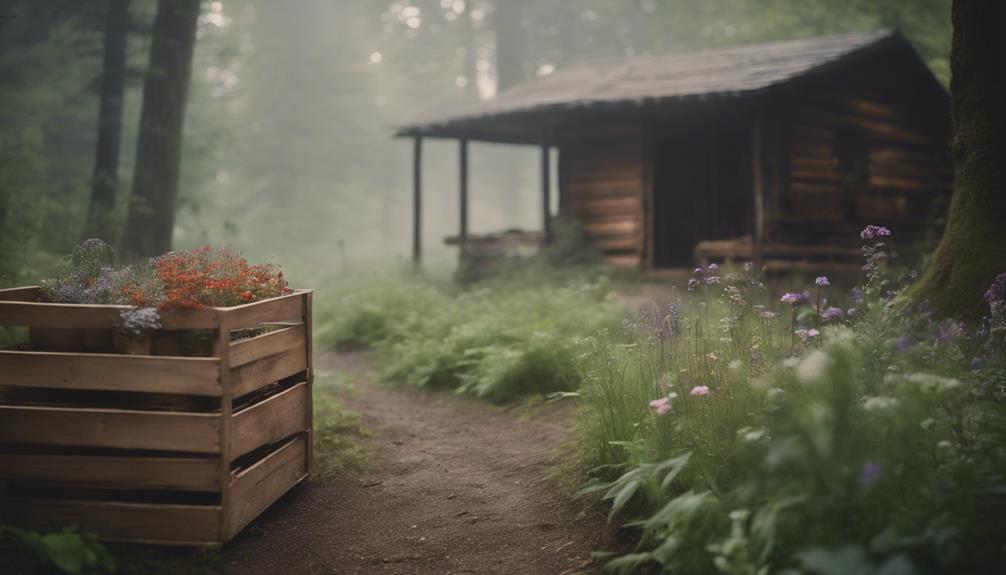
At Earthkeeper Herbals in Marquette, Michigan, students can explore the world of herbalism through a variety of courses and workshops. We're excited to immerse ourselves in their offerings, which cover a wide range of topics from plant identification to herbal preparations.
Their courses are hands-on, allowing us to learn about local plants and their medicinal properties in a thorough manner. What really resonates with us is Earthkeeper Herbals' emphasis on building relationships with plants for holistic healing. They understand that herbalism isn't just about using plants as medicine, but about fostering a deeper connection with nature.
One of their standout programs is the herbal intensive, which provides an in-depth learning experience for aspiring herbalists in Michigan. This all-encompassing program covers everything from ethical wildcrafting to herbal remedies, giving students a strong foundation in herbalism.
We appreciate that Earthkeeper Herbals prioritizes hands-on learning, ensuring that students gain practical skills to take with them on their herbal journey. With their expertise and dedication to herbal education, we're confident that students will leave feeling empowered and inspired to explore the world of herbalism.
Herbal Studies at U of M
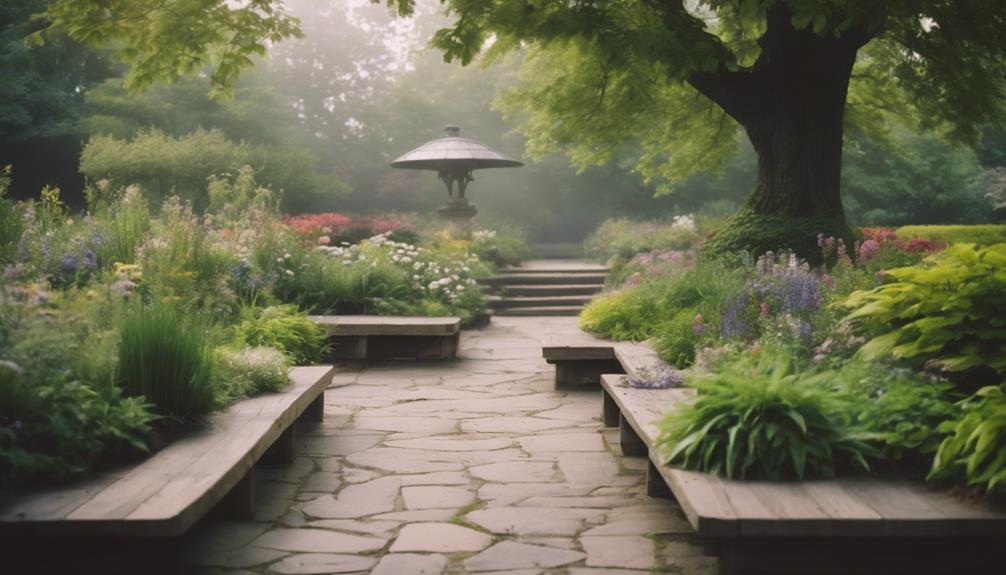
As we explore the herbal studies program at the University of Michigan, we're excited to learn more about the research opportunities, hands-on experiences, and expert guidance that set this program apart.
We'll take a closer look at the herbal medicine research projects, guided tours of the botanical gardens, and the impressive credentials of the faculty members.
Herbal Medicine Research
Through the University of Michigan's Herbal Studies program, we explore the scientific investigation of medicinal plants and their therapeutic properties, revealing the immense potential of herbal medicine. We immerse ourselves in the world of herbal medicine research, where we engage in hands-on projects to deepen our understanding of the subject. This program provides a platform for cutting-edge research in botanical medicine, allowing us to gain valuable insights into the pharmacological effects and applications of various herbal remedies.
As we plunge into the world of herbal medicine research, we uncover the vast potential of medicinal plants and their therapeutic properties. We learn about the scientific investigation of these plants, exploring their properties and effects on the human body. Through this research, we gain a deeper understanding of how herbal medicine can be used to prevent and treat various health conditions. By exploring the therapeutic properties of medicinal plants, we can discover new possibilities for natural health remedies.
Botanical Garden Tours
We venture into the University of Michigan's botanical garden, where guided tours await, offering a unique opportunity to explore the vast array of medicinal plant species and their applications in herbal medicine. As we wander through the gardens, we're surrounded by diverse plant species, each with its unique characteristics and medicinal uses. Our knowledgeable guides share their expertise, providing insight into the cultivation, identification, and benefits of various herbs.
Here are just a few highlights of what we can expect from these botanical garden tours:
- Hands-on learning: We get to participate in hands-on activities, learning about the medicinal properties of plants and how to identify them.
- Expert guidance: Our guides share their extensive knowledge of herbal medicine, providing a deeper understanding of the plants' applications.
- Practical knowledge: We gain practical skills and appreciation for the power of plants in herbal medicine, taking away valuable knowledge to apply in our own lives.
Through these botanical garden tours, we gain a deeper appreciation for the natural world and the importance of herbal medicine.
Faculty Expertise Profiles
At the University of Michigan, a talented team of faculty members with diverse backgrounds and expertise in herbology shape the herbal studies program, bringing a wealth of knowledge and experience to the classroom.
We're impressed by the faculty's expertise profiles, which showcase their diverse backgrounds and knowledge in herbology.
Professors at U of M bring a wealth of experience in herbal medicine, traditional healing practices, and botanical research to the classroom. We benefit from their practical wisdom, research insights, and mentorship, which enrich our learning experience.
The faculty's multidisciplinary approach to herbology incorporates scientific research, cultural perspectives, and traditional wisdom, providing a thorough understanding of the field.
We appreciate the faculty's commitment to excellence in teaching, research, and community engagement in herbology. Their expertise in herbal medicine is particularly remarkable, as they bring a deep understanding of the subject to the classroom.
The Herbal Path in Grand Rapids
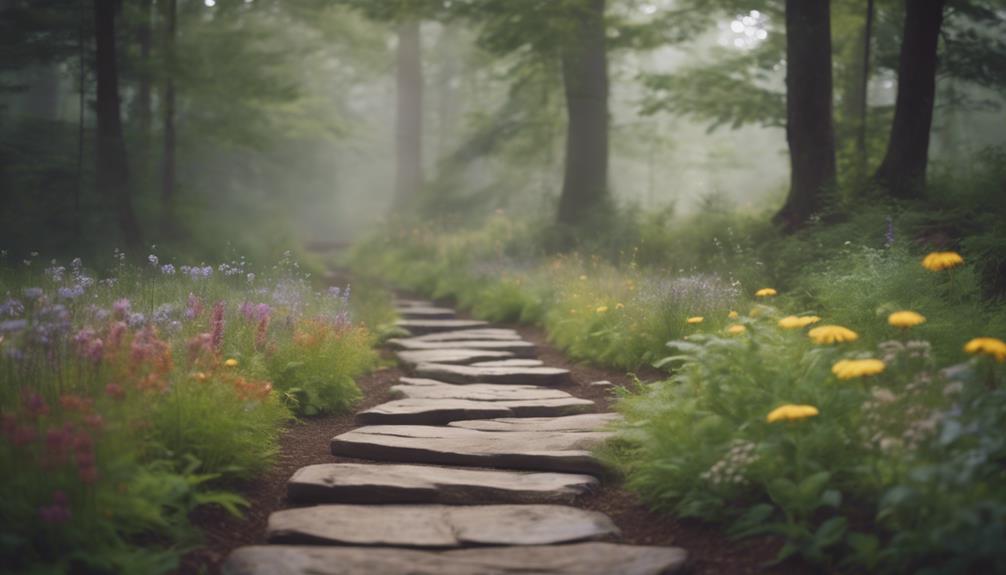
Located in the heart of Grand Rapids, The Herbal Path offers a thorough approach to herbalism education, providing students with a distinctive opportunity to explore the world of plant-based wellness. As we investigate the world of herbalism, we find that The Herbal Path stands out for its extensive courses and workshops.
Here are just a few reasons why The Herbal Path is a great choice for herbalism education:
- Hands-on experience: Students gain practical skills through herb walks and hands-on applications, giving them the confidence to work with plants.
- Personalized approach: The school emphasizes creating personalized herbal formulas and teaches students how to tailor their approach to individual needs.
- Sustainable practices: The Herbal Path prioritizes ethical wildcrafting and sustainable practices, ensuring that students learn responsible ways to source and use herbal materials.
Through their classes, The Herbal Path provides a supportive community for herbal learning and exploration in Michigan. Whether you're a beginner or looking to advance your skills, their courses offer a unique opportunity to explore the world of herbalism.
Holistic Wellness in Kalamazoo
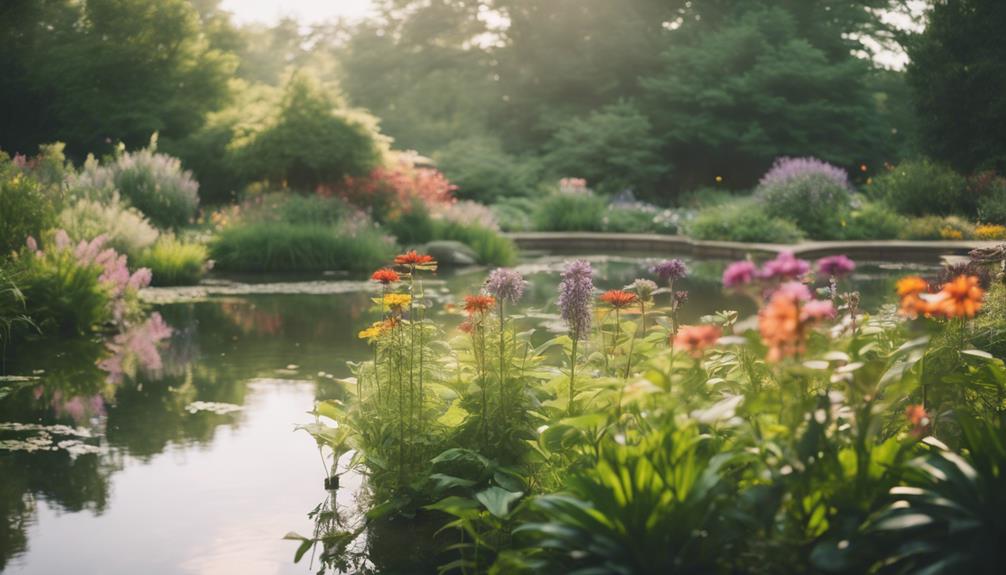
As we investigate the herbalism scene in Michigan, another standout institution, Holistic Wellness in Kalamazoo, offers a unique approach to herbology education. Located in the heart of Southwest Michigan, this institution provides an excellent opportunity for those interested in traditional European and American herbalism.
Their courses cover a range of topics, including herbal identification, medicinal uses, ethical practices, and historical perspectives. What sets them apart is their emphasis on affordability, making their classes accessible to a wide range of individuals. Participants can expect engaging storytelling, practical explanations, and informative handouts during their classes.
For those who can't attend in person, online classes are also available, ensuring inclusivity in learning opportunities. As we explore further into Michigan's herbalism scene, it's clear that Holistic Wellness in Kalamazoo is a gem worth exploring, especially for those in Southeast Michigan looking to expand their knowledge of herbology.
Wildcrafting in the Upper Peninsula

We head to the Upper Peninsula, where the vast wilderness offers a unique opportunity to connect with nature and learn the art of wildcrafting medicinal plants. This region provides an ideal setting for hands-on learning and exploration, with its diverse flora offering a rich resource for understanding plant energetics and herbal medicine.
Through wildcrafting experiences in the Upper Peninsula, we can learn sustainable harvesting methods and plant stewardship, ensuring the preservation of these natural resources for future generations.
Here are just a few reasons why wildcrafting in the Upper Peninsula stands out:
- Pristine environment: The Upper Peninsula offers a pristine natural environment, perfect for gathering medicinal plants.
- Hands-on learning: Participants can learn to ethically harvest local herbs and integrate them into herbal practices.
- Online classes: Supplement your wildcrafting experience with online classes to explore further into herbal medicine and plant energetics.
Frequently Asked Questions
Where Is the Best Place to Study Herbalism?
When we're looking for the best place to study herbalism, we consider several factors. We want a location that offers immersive classes, covers a wide variety of topics, and provides hands-on learning experiences.
We also look for affordable options with online resources for further learning. After researching, we think Michigan is a great choice, with schools like Proud Lake State Rec Area offering thorough courses that fit our criteria.
Is There a Demand for Herbalists?
We've seen it firsthand: a friend, suffering from chronic stress, finds relief through personalized herbal remedies.
It's scenarios like these that demonstrate the growing demand for herbalists.
According to the American Herbalists Guild, there's a need for trained professionals to meet the rising demand for natural remedies.
With the increasing interest in holistic healthcare, we're confident that herbalists will continue to be in high demand, offering a promising career path for those passionate about natural wellness.
Where Do Herbalist Make the Most Money?
We've found that herbalists tend to earn the most in metropolitan areas like San Francisco, New York City, and Los Angeles, where the higher cost of living and demand for holistic health services drive up salaries.
Additionally, private practice herbalists and those with specialized certifications or training can command higher fees.
Is Herbal Academy Worth It?
We've wondered if investing in the Herbal Academy is worth it. Think of it like planting a seed – you need to nurture it to see it grow.
Similarly, the academy's courses offer a thorough foundation in herbalism, but it's up to us to put in the effort to reap the rewards.
With detailed lessons, a supportive community, and practical knowledge, we believe the Herbal Academy is worth the investment, helping us blossom into skilled herbalists.
Conclusion
As we explore the world of herbology, Michigan offers a plethora of courses to investigate. From Ann Arbor to the Upper Peninsula, we've got options to suit every interest and skill level.
Whether you're a seasoned herbalist or just starting out, these courses promise to enlighten and inspire.
So why not venture into a journey of discovery, and uncover the wonders of herbalism in the Great Lakes State?

